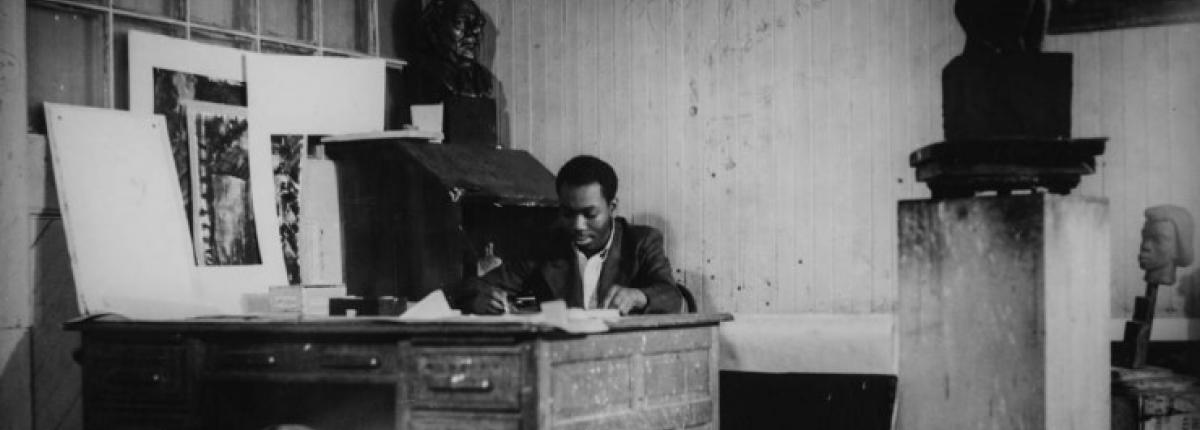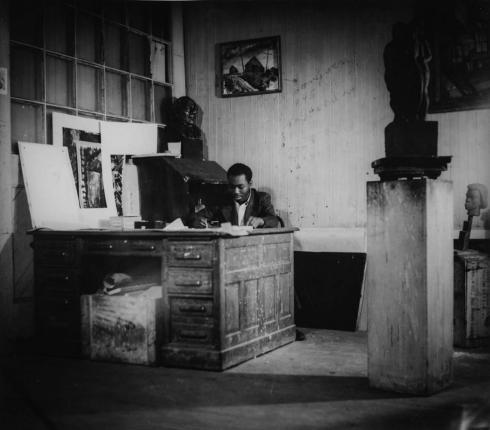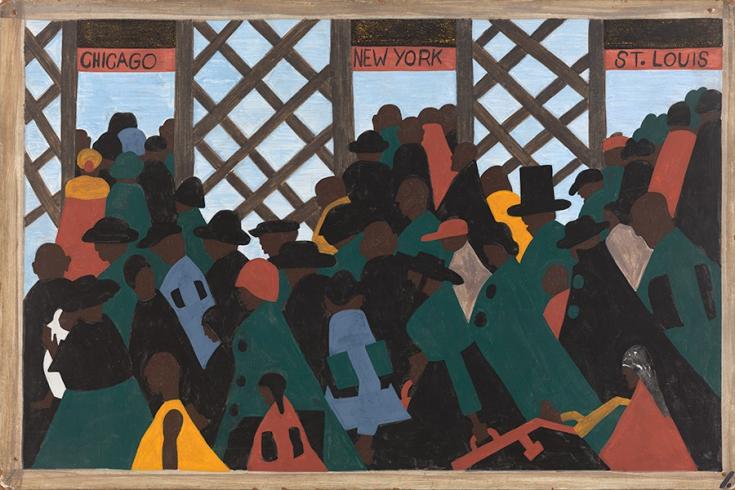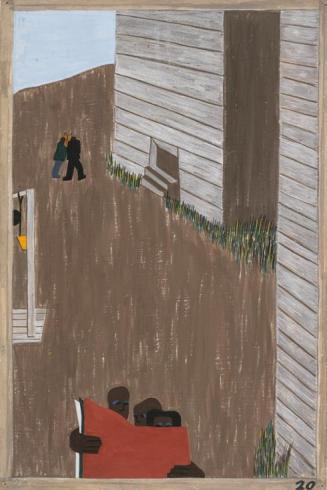The Captions of the Migration Series

Part 1: The Captions of The Migration Series
- Explain to students that Jacob Lawrence wrote out captions for all 60 panels of The Migration Series before he created the panels themselves. Lawrence changed the original panels fifty years later; the students will compare the similarities and differences between the captions.
- In groups of 3-4, have the students look at the original captions of The Migration Series alongside the panels.
- After they have read the original captions, students will then look at the 1993 revised version of the captions alongside the panels.
Part 2: Comparing the Captions
- In their groups, students will go caption by caption and underline the differences between the captions.
- Students will then respond to the following questions:
- What was similar about the captions?
- What was different about the captions?
- Why do you think Lawrence changed the captions?
- Do you think that the most recent version of the captions better captures the panels? Explain why or why not. Brainstorm your answers to this question. We will explore this question more fully in the next activity, which may lead to different responses.
- Share responses to the whole group.
Part 3: Reflection
- Each student will write a response to the following question: In your opinion, which version of the captions best captures the story of the Great Migration? Explain your answer with evidence from your group discussions and the panels themselves.
- For grades 6 and 7, students should write a paragraph in response to the prompt, including:
- A claim statement
- 1-2 pieces of evidence to support their claim statement—each clearly explained and connecting back to their claim
- A summarizing statement
- For grade 8, students should write an argument essay defending their position in response to the prompt, including:
- A claim
- 3 pieces of evidence to support their claims—each clearly explained in connection to their claims
- A conclusion paragraph summarizing key points
- For grades 9-10, students should write an argument essay defending their position in response to the prompt, including:
- A claim
- 3 pieces of evidence to support their claims—each clearly explained in connection to their claims
- 2-3 counterclaims and a discussion of the limitations of these counterclaims
- A conclusion paragraph summarizing key points
- For grades 6 and 7, students should write a paragraph in response to the prompt, including:
- Share with students that Jacob Lawrence first wrote the panels for The Migration Series in 1941 and later revised them in 1993 because he wanted the captions to tell a story that captures an ongoing journey for African Americans and other cultures.
- Students will select three panels from The Migration Series and revise the captions yet again to express current experiences in the 2020s. For each of the captions students should:
- Closely examine the original 1941 caption and the 1993 revised caption
- Write a newly revised caption to capture the current experiences of the 2020s
- Provide a brief explanation of why they selected that panel to revise, what changes they made, and why they made those changes
- Create a Migration Series “Revised” Gallery that displays all of the selected panels and revised captions.
- Students can develop a new title for the gallery to represent their present-day experiences
Additional Context
Lesson Context
Many aspects of the migrants’ experiences are represented throughout the 60 panels of The Migration Series. Jacob Lawrence evokes a sense of the migrants’ hope on their journey north and the realities of their new life in northern cities.
Panels no. 1 to 59 express a range of stories filled with challenges and hope that include finding new jobs, homes and communities, living in crowded urban environments, and facing a new form of discrimination. The last panel, however, leaves the audience feeling hopeful with the caption, “And the migrants kept coming,” pointing to the strong will, desire, and perseverance of African Americans in America.
Key Terms
Great Migration: In the Southern US, African Americans endured blatant discrimination and segregation as part of Jim Crow laws, as well as poor economic conditions. In the hopes of improved living and working conditions, hundreds of thousands of African Americans migrated from the South to the North, in particular to Chicago, Los Angeles, Detroit, Philadelphia, and New York. The Great Migration happened in two major waves: the first one being from 1916-1940 and the second one from 1941-1970.


